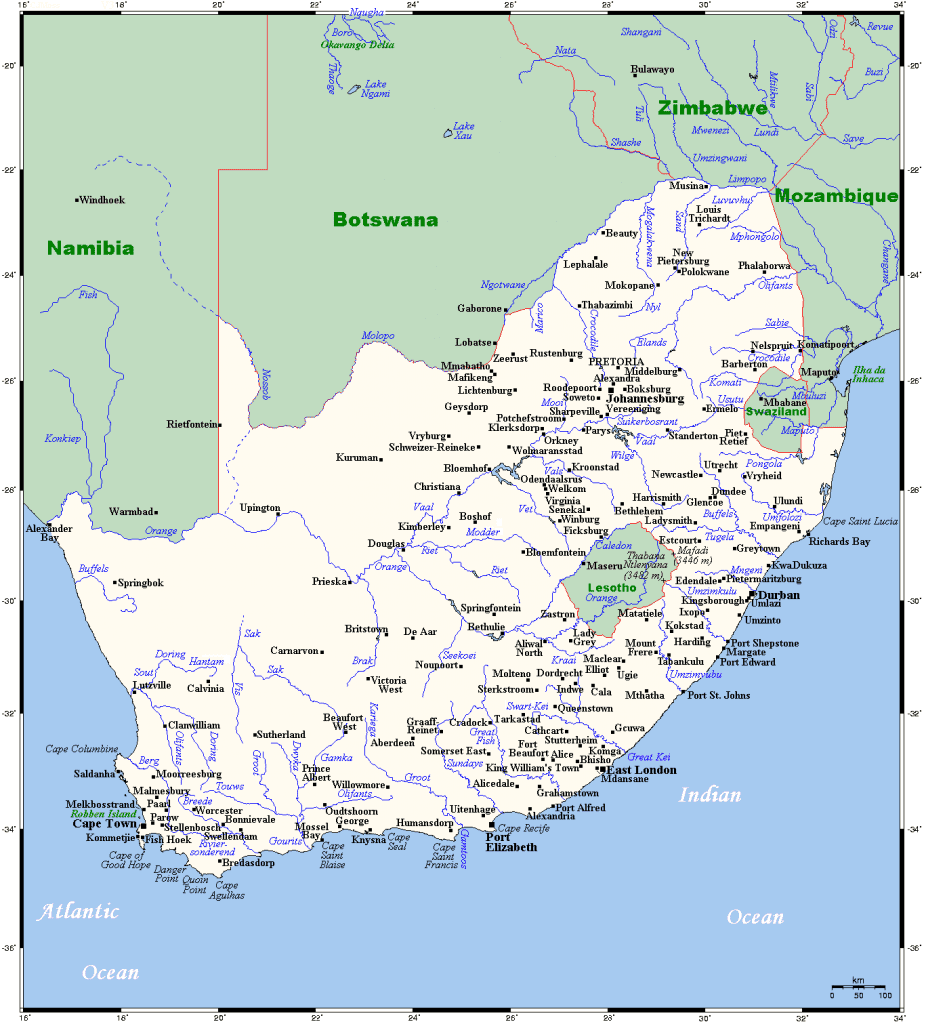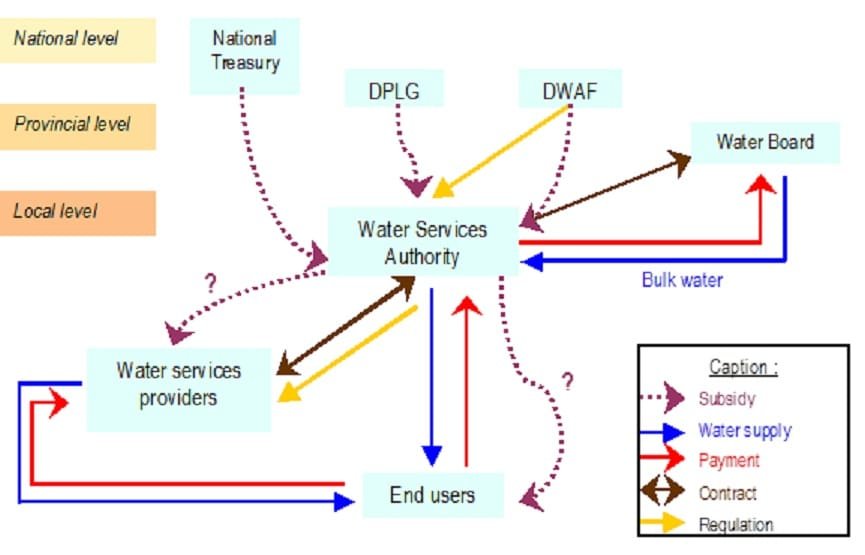1. Rivers, lakes and dams in South Africa.
2. Factors influencing the availability of water in South Africa.
The South Africa Department of Water Affairs: https://www.dws.gov.za (external link) Knowing where the bulk of the rainfall in South Africa occurs can help in understanding the position of water masses in South Africa. Look at the map below in conjunction with the rest of the information on this page.
1.1 Rivers
In map below, South Africa looks as though it has a lot of water, but South Africa is considered a dry country. Most of South Africa’s water is concentrated on the East Coast due to the influence of the warm Mozambique current in the Indian Ocean.
1.2 Lakes
Lakes of South Africa: http://en.wikipedia.org/wiki/List_of_lakes_in_South_Africa (external link) The maps below show a few lakes in South Africa. There are many more that are listed in the link above,
Lake St Lucia:
Lake Nhlabane, Richards Bay:
Lake Elands, Chrissiesmeer, Mpumalanga:
1.3 Dams
A list of dams in South Africa: http://en.wikipedia.org/wiki/List_of_dams_and_reservoirs_in_South_Africa (external link)
An overview of dams in South Africa (PDF): ![]()
The top 10 dams in South Africa:
Dams of South Africa
| No. | Name | River | Province | Full Capacity (x 100 000 m3) |
|---|---|---|---|---|
| 1 | Gariep Dam | Orange River | Border: Free State and Eastern Cape | 5340.6 |
| 2 | Vanderkloof Dam | Orange River | Border: Free State and Northern Cape | 3171.3 |
| 3 | Sterkfontein Dam | Nuwejaar Spruit | Free State | 2616.9 |
| 4 | Vaal Dam | Vaal River | Border: Gauteng, Mpumalanga and Free State | 2603.4 |
| 5 | Pongolapoort Dam | Phongolo River | KwaZulu-Natal | 2267.1 |
| 6 | Bloemhof Dam | Vaal River | Border: North West and Free State | 1240.2 |
| 7 | Theewaterskloof Dam | Riviersonderend | Western Cape | 480.2 |
| 8 | Heyshope Dam | Assegaai River | Mpumalanga | 451.3 |
| 9 | Woodstock Dam | Tugela River | KwaZulu-Natal | 373.3 |
| 10 | Loskop Dam | Olifants River | Mpumalanga | 361.5 |
3. Challenges of providing free basic water to rural and urban communities in South Africa.
South Africa is considered a water scarce region. This poses a major challenge to supplying basic water to rural and urban areas.
Foreign investment helps:
Restoring Wetlands and removing invasive plants improves water supply (A private initiative):
4. The role of government – initiatives towards securing water: inter-basin transfers and building dams.
South Africa’s Water management structure:
Institutional organisation of domestic water services in South Africa
In 1994, the government made the Department of Water Affairs and Forestry (DWAF) responsible for ensuring that all South Africans had equitable access to water supply and sanitation. https://www.dws.gov.za
5. Role of municipalities: provision and water purification.
There is general agreement that due to their economic conditions, the poor majority cannot afford to pay the full price for essential municipal services. The adoption of the policy in 2000/1 to provide a basket of free basic services to all, linked to an indigent policy which targets the poorest sections of communities is an integral part of the programme to alleviate poverty among poor households. The basket of services includes solid waste, water, sanitation and electricity. Since the introduction of the policy by government in 2001, the emphasis has been on the provision of a basic amount of free water and electricity, though work has started over the last year or so on sanitation and solid waste.
Many municipalities have also developed indigent policies to ensure that households with little or no income can be identified and can still get basic municipal services.
In most areas all users get a certain amount of free water and electricity – enough for their most basic needs. Those who use a lot must pay higher rates. In this way people with big houses and gardens who use a lot of electricity and water pay more and the poor who use very little, pay nothing or very little.
http://www.etu.org.za/toolbox/docs/government/basic.html
Water Dialogues:
6. Strategies towards sustainable use of water – role of government and individuals.
Sustainability of water services has been identified as a cornerstone for fulfilling the goals of the water policy in South Africa.
South Africa is one of the few countries in the world that formally recognise water as a human right. Its national water and sanitation programme, which is one of the largest national programmes in Africa, aims to deliver sustainably on that right. Read more:
Resource Quality Services: https://www.dws.gov.za



